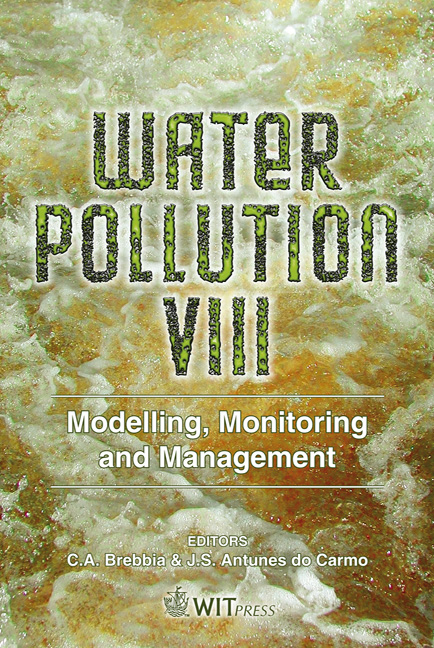Transport Parameter Estimation In Homogeneous And Two-layered Porous Media Using Two Different Methods: Genetic Algorithm And Image Analysis
Price
Free (open access)
Transaction
Volume
95
Pages
11
Published
2006
Size
449 kb
Paper DOI
10.2495/WP060391
Copyright
WIT Press
Author(s)
K. Inoue, I. Masaki, Y. Shimada & T. Tanaka
Abstract
Laboratory tracer experiments are conducted in homogeneous and two-layered flow fields under various hydraulic gradient conditions. NaCl solution dyed with Brilliant Blue FCF is used as a tracer in order to measure NaCl breakthrough curves and obtain images of dye tracer movement. Inverse analysis through genetic algorithm and image analysis are employed to estimate dispersivity, dispersion coefficient and retardation factor. The results show that dispersivity estimated from image analysis is about one order smaller than that of GA estimates. Moreover, it is revealed that tracer is slightly retarded relative to pore water velocity. As for parameter estimation in two-layered media, the values of equivalent dispersivity to the entire flow region exist between the values estimated in each layer. Estimated dispersivity in layered media depends on transport pathway of contaminant, suggesting the importance of observation location in parameter estimation problem. Keywords: tracer experiment, parameter estimation, inverse analysis, genetic algorithm, image analysis, dispersivity, retardation factor. 1 Introduction Several contaminants have been found in groundwater and the behavior of contaminats in the subsurface involves several different and simultaneous phenomena.Advection and dispersion,which are of significance in solute transport phenomena, play an important role in assessment or prediction of groundwater
Keywords
tracer experiment, parameter estimation, inverse analysis, genetic algorithm, image analysis, dispersivity, retardation factor.





